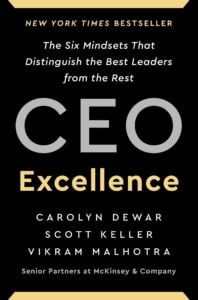FIVE CORE LEADERSHIP TACTICS
There are five leadership tactics that I follow that help me in my consulting practice. I encourage you to think about how they could help you in your position.
1.) Planning Backwards:
Focusing on the future and planning backwards is an effective leadership tactic. It encourages unconstrained thinking and disruptive ideas and will help you to propel your organization forward. Once you have a focused vision, align your people to engage on goals, and develop a comprehensive action plan to move forward.
- Where do you want to be professionally and personally one year from today?
- What do you need to do to get there? (Of your action items, prioritize them in sequenced order and develop an action plan on what is required in each step.)
2.) Purpose-driven and value-focused:
My consultancy purpose and values determine my guiding principles. If you have not listed your guiding principles, it is time to do so. Your guiding principles outline how you operate, the organization’s role and the individual within.
- What is your company vision, purpose statement/mission, and what values define how you do business?
3.) Intentionally listen actively:
Leadership is a conversation. Improving your listening ability will be a cornerstone of your leadership success. Listening will assist you in problem-solving, determining and implementing innovative ideas, defining process improvements, and developing new ideas for faster and better outcomes. Engage your team, clients/customers and external stakeholders in a discussion on progress once modifications have been agreed upon, design and circle back to question if you have it right.
4.) Innovate continually.
You cannot afford to become too comfortable and complacent. Customer and client preferences in the product or service area you are offering are continually changing. Technology advances will improve speed and results, can transform our processes, and adaption of best practices. Quarterly question processes, this will help you retain focus on improvement and will become part of your culture. Encourage bottom-up and top-down idea initiatives for improvement. Make decisions faster and base them on data with a focus on quality. Quarterly, prioritize the top three areas you can innovate to bring the greatest return to your organization.
5.) Performance – think short and long-term.
To thrive in the long term, we need to have not only long-term goals but also short-term goals to gain momentum. Future-proof your performance by answering the questions below:
- What trends are influencing your business and sector?
- What are your customers and clients seeking or asking that is not currently being provided?
- What is your data telling you? The facts have the answers.
- Ask your employees for feedback on what is working and what isn’t and any suggestions they have for improvement.
- What are your duties and responsibilities – are they aligned with your purpose?
- Assess how you are doing things, is it the best and most effective way, or have you fallen into a routine and repeated past actions hoping for better results?
If you have any questions about leadership tactics or want to learn more on the powerful benefits of executive coaching to elevate your professional success, please reach out to +1 604-616-1967 or askme@jennyreilly.com and book a complimentary 30-minute strategy session. If you want monthly leadership and professional development tips, sign up for my JRC newsletter or check out my social media on Instagram for information on my new upcoming 6-month executive leadership course.


